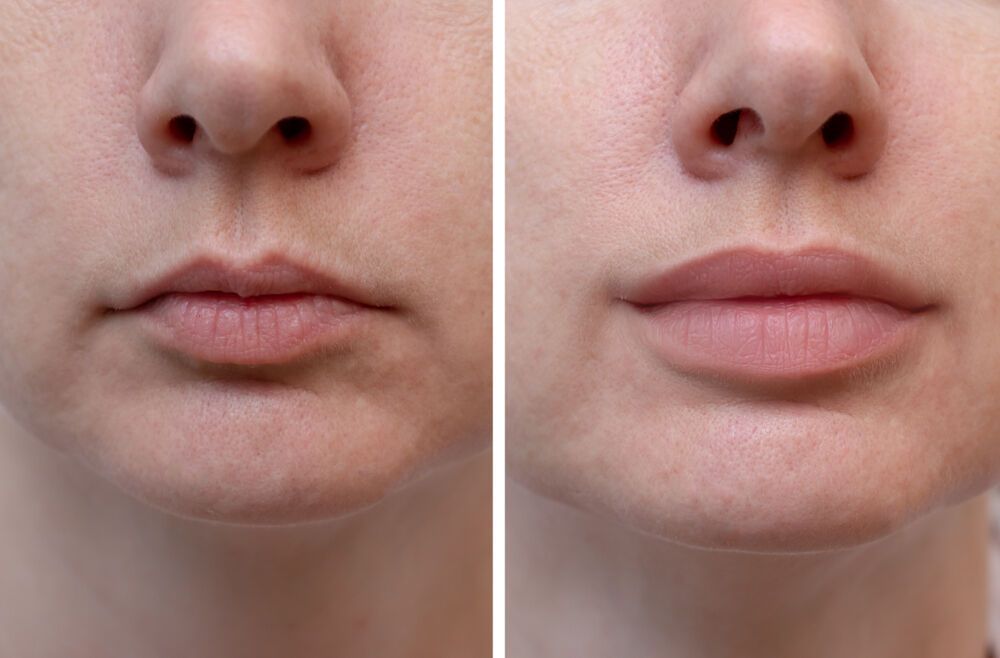Lip fillers have become increasingly popular for people looking to enhance the size and shape of their lips. The procedure involves injecting a dermal filler, such as hyaluronic acid, into the lips to add volume, definition, and contour. Before getting lip fillers, it’s important to consult with a qualified and experienced medical professional, such as a board-certified dermatologist or plastic surgeon, who can assess your individual needs and provide customized recommendations.
Here are some key points to consider when thinking about lip fillers:
- Types of Fillers: The most commonly used fillers for lip augmentation are made of hyaluronic acid, a substance that occurs naturally in the body. Hyaluronic acid fillers are preferred because they are safe, temporary, and reversible. Some well-known hyaluronic acid fillers for lips include Restylane, Juvéderm, and Belotero. These fillers can add volume, improve lip symmetry, and soften fine lines around the mouth.
- Procedure: The procedure typically begins with a consultation to discuss your goals and expectations. Your healthcare provider will then assess your lips and facial structure to create a personalized treatment plan. During the actual procedure, a topical numbing cream or local anesthesia may be used to minimize discomfort. The filler is then injected into targeted areas of the lips to achieve the desired fullness and shape. The entire process usually takes around 15 to 30 minutes.
- Recovery and Results: After the procedure, you may experience some swelling, bruising, or redness, but these effects are typically mild and resolve within a few days. It’s important to follow post-treatment care instructions provided by your healthcare provider to ensure optimal results. Many people are able to resume their normal activities immediately after the procedure. The results of lip fillers are visible right away, and as the initial swelling subsides, the final outcome becomes more apparent. The duration of the results can vary depending on the type of filler used and individual factors, but generally, they last between 6 to 12 months.
- Risks and Side Effects: Like any cosmetic procedure, there are potential risks and side effects associated with lip fillers. These may include swelling, bruising, asymmetry, and rare but serious complications such as infection, allergic reactions, and vascular occlusion. Choosing a qualified and experienced healthcare provider who uses FDA-approved fillers can minimize these risks. It’s crucial to discuss your medical history, allergies, and expectations with your provider before undergoing the procedure.
- Cost: The cost of lip fillers can vary based on factors such as the type of filler used, the expertise of the provider, and the geographic location of the practice. It’s important to inquire about the total cost of the procedure during your consultation, as it typically includes the cost of the filler itself, the healthcare provider’s fee, and any additional follow-up appointments that may be needed.
- Maintenance: Lip fillers are temporary, and over time, the body naturally breaks down the filler material. To maintain the results, many individuals choose to undergo touch-up treatments once the initial effects start to diminish. It’s essential to follow up with your healthcare provider as recommended to discuss the longevity of the results and plan for any follow-up treatments if desired.
- Personal Considerations: Before deciding to get lip fillers, it’s important to have realistic expectations and understand that the results of the procedure may vary for each individual. Factors such as lip anatomy, facial structure, and skin quality can influence the outcome. It’s also crucial to communicate openly with your healthcare provider about your aesthetic goals and any concerns you may have.
Overall, lip fillers can be a safe and effective way to enhance the lips and achieve a fuller, more youthful appearance. However, it’s important to do thorough research, seek qualified providers, and have a comprehensive discussion about the procedure before making a decision. Always prioritize your safety and well-being when considering any cosmetic treatment.

